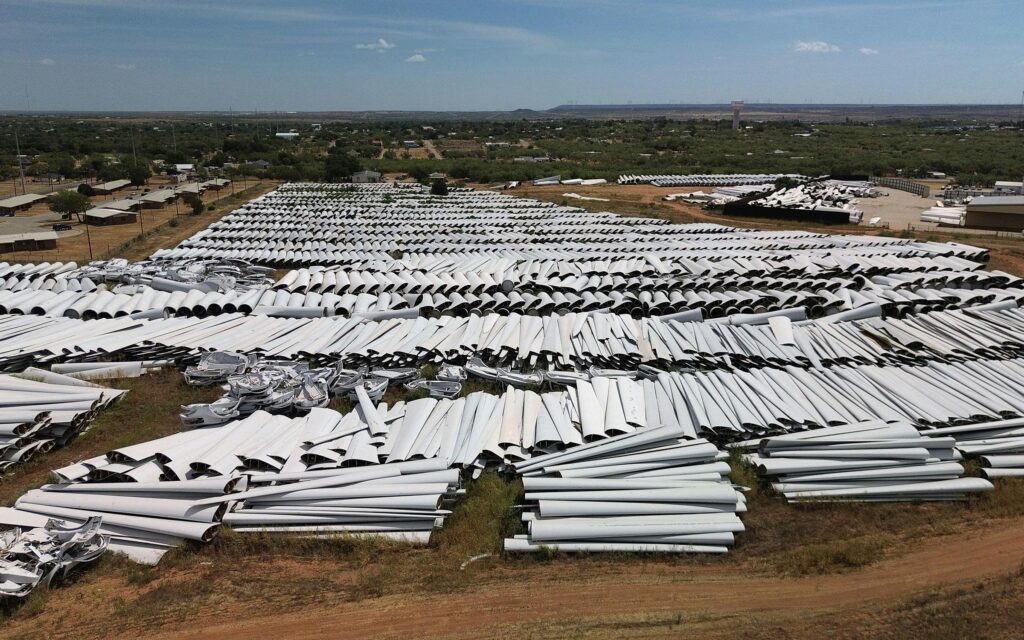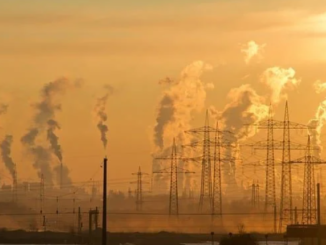
ENB Pub Note: This article is from David Blackmon’s Substack and supports several articles Stu Turley has written on The Energy News Beat Substack. We recommend following and subscribing to both Substacks. I drive by the Wind Farms all the time in Texas, and over the years, I have noticed that maintenance is taking its toll. Lots of oil on the motors, and more of them are not working. This will only accelerate as the funding dries up out of the Inflation Reduction Act, and the “Name Plate Upgrades” can no longer be used to fund maintenance. This was a real win for the wind companies. The United States is facing a price tag of $89 billion for land reclamation for the wind turbine fleet as they age out and money is no longer available. Buckle up.

If you’ve ever wondered why the so-called “green revolution” feels more like a money pit than a climate savior, you aren’t alone. But a new report at least helps in terms of understanding why it’s all so costly.
A fresh report from IntelStor, that Houston-based outfit knee-deep in energy market intel, drops a bombshell: America’s wind turbine fleet is set to hemorrhage over $2.92 billion on repairs in 2025 alone. And get this—the fragile blades, those towering symbols of Biden-era virtue signaling, gobble up 37% of that tab, topping $1 billion in fixes just to keep the things from snapping like twigs in a Texas twister.
It’s almost poetic, isn’t it? We’re told wind is free, infinite, and oh-so-sustainable. Yet here we are, in the twilight of 2025, staring down a repair bill that could fund a small nation’s infrastructure. IntelStor’s crystal ball – powered by their proprietary data crunching – pegs lightning strikes of all things as the main cause of wind blade bust-ups, racking up $255.7 million in 2025 costs.
That’s right: Mother Nature’s own fireworks show is frying these fiberglass behemoths left and right, with expenses projected to spike to $333 million by 2034. Add in blade root failures – those sneaky separations at the hub that demand massive cranes and weeks of downtime – and you’re looking at another $222.3 million annual hit.
Pitch bearings aren’t far behind at $190.9 million, often requiring full nacelle lifts because, surprise, up-tower tweaks don’t cut it for these overengineered monstrosities. Don’t even get me started on the generators and yaw bearings. The former’s bearing failures from stray currents will siphon $190.6 million, while the latter – slewing rings that let turbines chase the wind – claim over 10% of the total repair pie.
It’s a symphony of squeaks and groans out there on the prairies and plains, where 52.5% of these costs tie to 2-3 MW turbines – the workhorses of the fleet – up from the smaller 1-2 MW models that still shoulder 33.1% but suffer disproportionately from lightning strikes.
You just can’t make this stuff up.
This is energy folly, pure and simple. Taxpayers and ratepayers foot these bills through subsidies pumped by the Inflation Reduction Act’s green giveaways – billions in production tax credits that prop up an industry allergic to accountability. IntelStor hints at “innovation” in tougher materials or on-site fixes, name-dropping in-situ trends for bearings and gearboxes as potential saviors.
It is all just so noble, this Quixotic effort to force an unsustainable substitute for carbon-emitting power sources? Not really. Let’s call it what it is: a Band-Aid on a business model built on intermittency and illusion. Wind’s capacity factor hovers around 35% even in the most ideal weather conditions, meaning these turbines sit idle more than they spin. Yet we’re expected to cheer as repair cranes dot the horizon like metallic vultures.
The result, of course, is skyrocketing electricity costs for families already squeezed by inflation, all while China laughs and builds coal plants aplenty.
Wind boosters might tout “energy dominance,” but dominance in what – downtime? This $1 billion blade bonfire exposes the scam: Renewables aren’t cheap; they’re a deferred debt, paid in full when the wind dies and the storms rage.
And here’s the elephant in the room: This energy insanity has all been sustained for the past three years by those IRA subsidies. What happens now that the subsidies are being phased out, gone entirely at the end of 2027?
Who or what will pay for all those big cranes to come out into the Permian Basin desert to keep coming out to make the repairs? Or will the broken-down blades and turbines simply become permanent scars on America’s horizons, dilapidating totems of energy fantasy run amuck?
The answer seems obvious, but no one in a position of authority seems willing to take the lead on doing anything to prevent it. What a sorry state of affairs.
Got Questions on investing in oil and gas? Or do you have a Tax Burden in 2025?
ENB Top News
ENB
Energy Dashboard
ENB Podcast
ENB Substack








